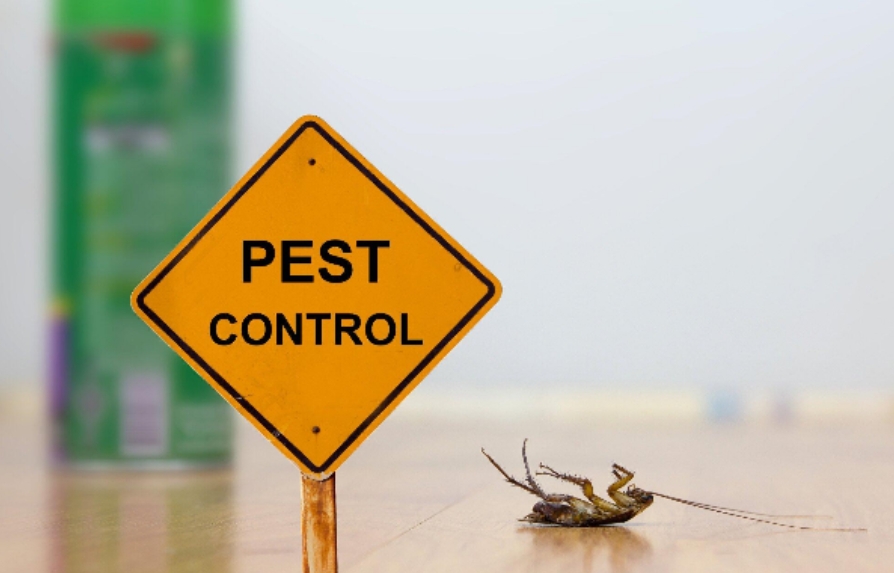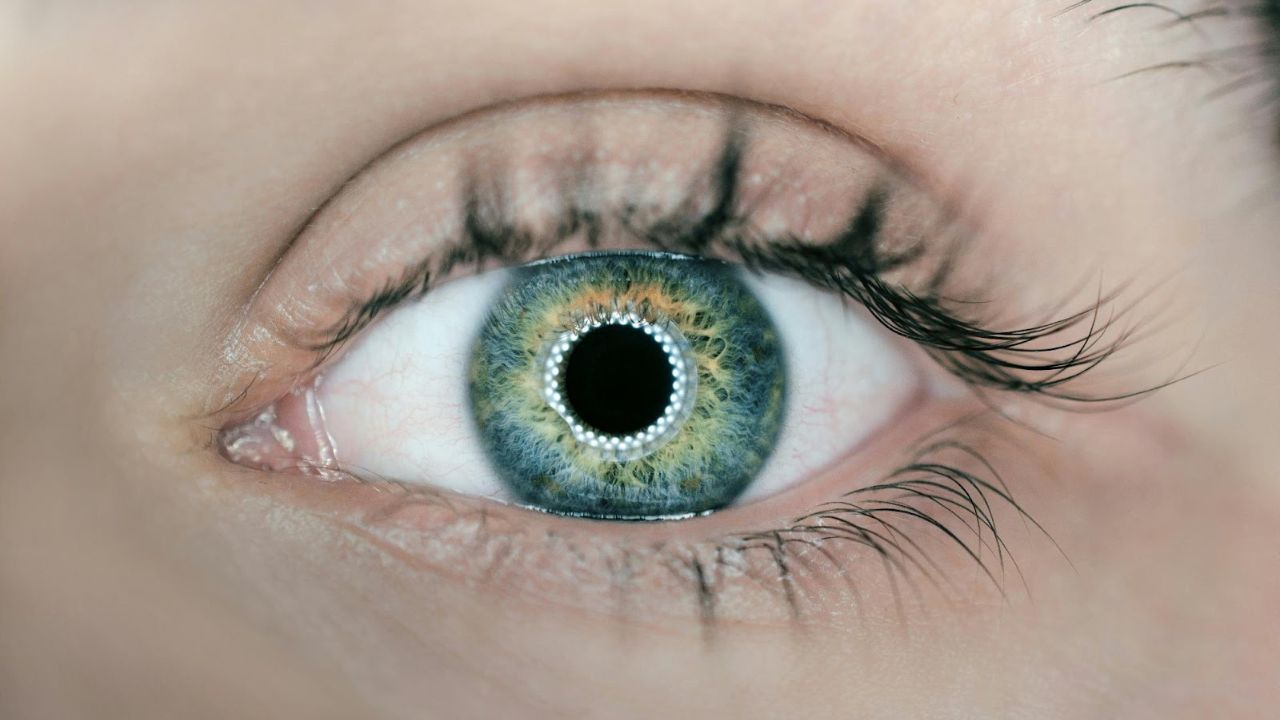Health
Emergency Pest Control 101: What to Do When You Discover an Infestation
Discover the essential steps for emergency pest control when facing an infestation. Act swiftly with our expert guide on emergency pest control solutions.

Discovering a pest infestation in your home or business can be a nightmare. These unwelcome invaders can cause significant damage, pose health risks, and disrupt your peace of mind.
Knowing how to handle such situations promptly and effectively is crucial. This guide provides essential steps for emergency pest control. We’ll help you manage infestation emergencies with confidence and efficiency.
Read on!
Identify the Pest
The first step in emergency pest control is to identify the pest. The type of pest will determine the most effective treatment method and appropriate safety precautions. Common household pests include:
- rodents
- insects
- arachnids
Each of these groups has different characteristics and behaviors that impact their control methods. For example, if you see small black droppings around your home or business, you likely have a rodent infestation. On the other hand, if you notice itchy bites on your skin, bed bugs may be the culprit.
It is essential to accurately identify the pest before taking any further action. If you are unsure of the type of pest in your home or business, contact a professional for assistance.
Assess the Situation
Once you have identified the pest, assess the situation. Determine how severe the infestation is and which areas of your home or business are affected. This assessment will help you determine the best course of action.
Some pests, such as rodents, can cause structural damage to your property if left unchecked. In this case, it is crucial to address the infestation immediately to prevent further harm.
However, some pests may not pose an immediate threat and can be managed with less urgency. Understanding the severity of the infestation will help you prioritize your actions.
Gather Necessary Supplies
Before you begin any pest control measures, gather all necessary supplies. This includes protective gear such as gloves, masks, and eye protection, as well as tools for removing pests and treating affected areas.
It is also essential to read and follow all safety warnings and instructions for any pest control products you use. Take note that pest removal and control products can be harmful to humans and should be handled with caution.
Implement Control Measures
With the proper protective gear and supplies, it’s time to implement control measures. This can include setting traps, using insecticide sprays or dusts, sealing entry points, and removing sources of food or shelter for pests.
Be sure to follow all instructions carefully and take necessary precautions to protect yourself, others, and the environment. If your goal is pest eradication, it may be best to contact a professional pest control service for more extensive and specialized treatments.
Seek Professional Help
If the infestation is severe or if you are uncomfortable handling the situation yourself, seek professional help. Pest control experts have the knowledge, experience, and equipment to effectively handle emergencies and prevent future infestations.
They can also provide valuable advice on how to prevent pests from entering your home or business in the future. Whether you are getting help from the best pest control company in Atlanta or another location, be sure to research and choose a reputable and licensed service.
Follow These Emergency Pest Control Tips
Discovering a pest infestation can be overwhelming and stressful. However, by following these essential steps for emergency pest control, you can effectively manage the situation with confidence and efficiency.
Follow these tips, and remember to always prioritize safety when dealing with pests. And if you need assistance, don’t hesitate to seek professional help.
Should you wish to explore other topics, visit our blog. We’ve got more!
Health
Prostadine Colibrim: The Liquid Lifeline Your Prostate Might Be Begging For?

Let’s talk about something most guys shuffle their feet about until it becomes impossible to ignore: prostate health. Here’s a number that should snap you to attention: By age 50, roughly half of all men experience some form of prostate-related urinary symptom. That frequent nighttime dash to the bathroom? The weak stream that feels like a frustrating trickle? The constant feeling of “gotta go”? Yeah, that’s often the prostate whispering (or shouting) for attention. Ignoring it isn’t stoic; it’s just… unwise.
The problem? Traditional solutions often feel like a trade-off. Prescriptions? Potential side effects that sound worse than the original problem. Overcrowded supplement aisles filled with giant horse pills? Hard to swallow, literally and figuratively, with questionable absorption. It’s enough to make a guy just grit his teeth and live with it. But what if there was a different path? Something harnessing nature’s power, delivered in a way your body can actually use effectively? That’s where Prostadine Colibrim enters the chat – a liquid formula generating buzz for its plant-powered approach to prostate and urinary comfort. Let’s dive in.
What Exactly Is Prostadine Colibrim? (Hint: It’s Not Another Chalky Pill)
Simply put, Prostadine Colibrim is a liquid dietary supplement specifically crafted for men navigating the often-turbulent waters of prostate health, particularly as they cross the 40-year mark. Age catches up, hormones shift, and that walnut-sized gland below the bladder? It can start acting up. Prostadine Colibrim positions itself as a natural ally, aiming to:
- Promote Normal Prostate Function: Supporting the gland’s healthy size and activity.
- Calm Inflammation: A key culprit behind many urinary discomforts.
- Enhance Urinary Flow & Comfort: Targeting that frustrating weak stream, urgency, and incomplete emptying.
- Support Hormonal Balance: Particularly crucial for managing DHT (dihydrotestosterone), a hormone linked to prostate enlargement (BPH).
Its core proposition? Liquid is faster. By bypassing the digestive breakdown needed for pills, the active ingredients in Prostadine Colibrim are designed to hit your bloodstream quicker. Think of it like watering a plant directly at the roots versus hoping rain trickles down – bioavailability gets a significant boost.
Why Your Prostate Deserves Plant Power: The Science Behind the Ingredients
Forget synthetic concoctions for a minute. Prostadine Colibrim leans heavily on botanicals and minerals with some serious historical and scientific backing for men’s health. Let’s break down the key players:
- Saw Palmetto (Serenoa repens): The undisputed heavyweight champ of natural prostate support. Honestly, this isn’t talked about enough in mainstream circles. Tons of research suggests it helps block the conversion of testosterone to DHT and reduces inflammation in the prostate. Less DHT often means less enlargement and fewer urinary symptoms. It’s practically the foundation stone of any decent prostate formula.
- Nettle Root (Urtica dioica): More than just the stinging weed you avoid on hikes! Nettle root works synergistically with Saw Palmetto. It seems to bind to proteins in the prostate, potentially preventing growth factors from stimulating excessive cell proliferation. It also has anti-inflammatory properties. A powerful tag-team partner.
- Zinc: This essential mineral is crucial for male hormonal health. Zinc levels naturally decline with age, and deficiency is linked to prostate issues. It plays roles in immune function, hormone metabolism (including testosterone), and overall prostate tissue health. You simply can’t overlook it.
- Kelp Powder: A rich source of natural iodine. Why does that matter? Iodine is vital for thyroid function, which indirectly influences hormone balance throughout the body. Some emerging research also explores iodine’s potential role in supporting prostate cell health. It’s a holistic addition.
- Pomegranate Extract: Packed with potent antioxidants (punicic acid, ellagitannins). Inflammation and oxidative stress are big players in prostate discomfort and aging. Pomegranate fights back, offering protective benefits. Plus, it just screams “health.”
The Synergy Factor: Here’s the kicker – it’s not just about individual ingredients. The real magic (hopefully) lies in how they work together. Saw Palmetto and Nettle Root are a classic combo. Zinc supports the hormonal environment. Kelp and Pomegranate provide broad-spectrum antioxidant and anti-inflammatory support. This multi-pronged approach is what makes Prostadine Colibrim intriguing.
Also Read: Colon Cleansing: A Natural Approach to Detox and Wellness
Liquid Gold? The Potential Advantages Over Pills
Alright, let’s address the elephant in the room: why bother with a liquid when pills are so… portable? Well, let’s break that down. It boils down to absorption and effectiveness:
- Faster Absorption: Liquids don’t need to be broken down by stomach acid and digestive enzymes before the active compounds can be absorbed through the intestinal wall. They start entering the bloodstream much quicker. This potentially means faster relief from those nagging urinary symptoms.
- Higher Bioavailability: Simply put, more of the good stuff might actually reach your system. Pills can lose potency during digestion. Some ingredients, especially fats or certain botanicals, are inherently better absorbed in liquid form. You’re paying for these ingredients – shouldn’t you get as much benefit as possible?
- Easier on the Gut: Let’s be real. Swallowing handfuls of pills daily is a chore, and some can irritate sensitive stomachs. A liquid shot, especially one presumably formulated for taste (though manage expectations!), can be gentler.
- Convenience for Some: For men who already struggle with swallowing pills (dysphagia isn’t uncommon), a liquid is a clear winner.
Liquid vs. Pills: The Prostate Supplement Showdown
| Feature | Prostadine Colibrim (Liquid) | Traditional Prostate Pills | Advantage |
|---|---|---|---|
| Absorption | Faster entry into bloodstream | Slower, requires digestion | Liquid |
| Bioavailability | Potentially higher utilization | Can be reduced by digestion | Liquid |
| Ease of Use | Quick shot; good for pill-averse | Requires swallowing solid form | Context Dependent |
| Portability | Bottle; may require measuring | Highly portable (blister packs) | Pills |
| Stomach Feel | Generally gentler | Can cause irritation for some | Liquid |
| Speed of Effect | Potentially faster symptom relief | May take longer to notice | Liquid |
Realistic Expectations & Potential Downsides: Cutting Through the Hype
Look, I’m not here to sell you snake oil. As a seasoned observer of the supplement space, some experts disagree on the absolute necessity of liquid forms, arguing high-quality capsules can still be very effective. And Prostadine Colibrim isn’t a magic wand. Keep these points grounded:
- It’s a Supplement, Not a Cure: It supports health, manages symptoms, and promotes function. It doesn’t claim to cure BPH or prostate cancer. Consistent, long-term use is usually key.
- Results Vary: Like any natural remedy, individual responses differ based on genetics, diet, lifestyle, and the severity of symptoms. Patience is required.
- Taste: Liquid supplements can sometimes be… challenging. While formulas are improved, be prepared for a potentially strong herbal taste. Mixing it with juice might be your friend.
- Cost & Convenience: Liquid supplements can sometimes be pricier per serving than pills, and carrying a bottle isn’t always as discreet or convenient as a pill case.
- Check with Your Doc: This is non-negotiable, guys. Seriously. Before starting any new supplement, especially if you have a diagnosed prostate condition, are on medication (like blood thinners or prostate prescriptions), or have other health issues, talk to your doctor. Saw Palmetto, for instance, can interact with some meds.
Who Should Consider Prostadine Colibrim? (And Who Might Want to Pause)
This liquid formula could be a compelling option if:
- You’re a man over 40 starting to notice changes in urinary flow, frequency (especially nocturia – those night trips), or comfort.
- You prefer natural, plant-based approaches to health support.
- You’ve struggled with traditional prostate pills – hard to swallow, stomach upset, or just didn’t feel like they worked well enough.
- You value the potential for faster absorption and higher bioavailability.
- You’re already health-conscious and looking for proactive prostate support.
Hold off or consult your physician first if:
- You have a diagnosed prostate condition (like BPH or prostatitis) without your doctor’s knowledge/approval.
- You’re currently taking prescription medications (especially blood thinners, hormone therapies, or other prostate meds – interactions are possible).
- You have known allergies to any of the ingredients (Saw Palmetto, Nettle, Kelp/Iodine, Pomegranate).
- You’re under 40 and have significant urinary symptoms – get checked out to rule out other causes.
You May Also Read: Save Your Results: Downloading Your Ancestry DNA
The Bottom Line: Is Prostadine Colibrim Worth a Shot?
Frankly, the concept is solid. Leveraging well-researched prostate-supporting botanicals like Saw Palmetto and Nettle Root? Check. Including crucial minerals like Zinc? Check. Adding antioxidant powerhouses like Pomegranate? Check. Delivering it in a potentially faster-absorbing liquid form? That’s the innovative twist.
For men frustrated by the limitations of pills or simply seeking a more holistic, absorbable approach to prostate wellness, Prostadine Colibrim presents a genuinely interesting alternative. The potential for quicker relief from those disruptive urinary symptoms is a major draw. It’s about taking proactive control using nature’s toolkit, delivered efficiently.
But – and this is a big but – it’s not a silver bullet. Commit to it consistently, manage your expectations, and for heaven’s sake, partner with your healthcare provider. Don’t suffer in silence or self-diagnose. Get the proper checks.
If you’re ready to explore a liquid alternative to support your prostate health journey, to potentially reclaim uninterrupted sleep and a stronger flow, Prostadine Colibrim deserves a spot on your radar. Could this be the natural support your body absorbs best? Only one way to truly find out. What’s your next step towards better prostate health?
Health
Beyond the Surface: How SkinPres T Rewrites the Rules of Anti-Aging Skincare

Hook: Ever feel like your expensive serums just sit on your skin, playing dress-up rather than delivering real change? You’re not imagining things. Most skincare acts like a polite guest – it visits the surface but rarely gets invited deeper where the real rejuvenation happens. What if there was a way to send those potent actives exactly where they need to go? That’s the promise, and frankly, the reality, of a new player shaking up the dermatology world: SkinPres T.
Introduction: Forget the fleeting glow of yesterday’s moisturizer. We’re entering an era of skincare that works smarter, penetrates deeper, and delivers results that were once the sole domain of dermatologist offices. I’ve seen countless trends come and go – miracle berries, gold flakes, you name it – but what excites me now isn’t just a new ingredient; it’s a fundamental shift in how ingredients work. SkinPres T isn’t just another serum in a fancy bottle. It’s the culmination of serious science – chemists and skin docs huddled together – cracking the code on transdermal delivery. Think of it like upgrading from a dial-up modem to fiber optic for your skin. Using nanotechnology, it escorts powerhouse ingredients like hyaluronic acid, smart peptides, niacinamide, and potent antioxidants past the superficial barrier, deep into the living layers where collagen lives, elasticity is born, and true repair happens. The clinical results? They’re kinda hard to ignore: a documented 47% reduction in fine-line depth after just 12 weeks, alongside serious boosts in firmness and radiance. This isn’t just hydration; it’s a comprehensive skin health overhaul. Let’s dive into why SkinPres T feels less like a product and more like a turning point.
The Skin Barrier Blues: Why Surface-Level Skincare Falls Short
Our skin is a marvel of evolution – a protective shield. But that very strength is its weakness when it comes to topical treatments. The outermost layer, the stratum corneum, is like a brick wall designed to keep things out. Most skincare molecules are simply too big or incompatible to slip through efficiently. Honestly? It’s frustrating. You diligently apply that potent vitamin C or retinol, but maybe only 5-10% actually penetrates meaningfully. The rest sits there, evaporates, or gets wiped off on your pillowcase. You get surface hydration, maybe a temporary plump, but the deep cellular renewal, the collagen stimulation, the true reversal of damage? That often remains frustratingly out of reach. It’s like trying to fix a car engine by polishing the hood. We need a better way to get the tools inside.
SkinPres T Decoded: The Science of Getting Deeper
This is where SkinPres T shifts the paradigm. It’s not just about what’s in the bottle, but how it’s delivered. The magic lies in two key, intertwined technologies:
- Advanced Transdermal Delivery: Think of this as the sophisticated navigation system. It uses specific mechanisms (like optimized carriers and penetration enhancers that respect the skin’s integrity) to help actives bypass the formidable stratum corneum barrier safely and effectively. It’s finding the hidden pathways.
- Nanotechnology: Here’s where it gets really clever. Key actives are encapsulated within tiny, lipid-based carriers – nanoparticles. These are engineered to be the right size, shape, and surface charge to be recognized and absorbed by the skin, rather than repelled. It’s like shrinking the cargo and putting it in a stealth vehicle designed specifically for skin infiltration.
The result? Actives aren’t just smeared on top; they’re efficiently transported into the epidermis and dermis – the living, breathing layers where repair and regeneration occur. This is dermal absorption done right. It transforms good ingredients into profoundly effective ones.
The Powerhouse Players: Key Actives & Their Supercharged Delivery
SkinPres T isn’t shy about packing a punch. But the genius is how delivery amplifies each ingredient’s potential:
- Hyaluronic Acid: We all know HA for hydration. But standard HA mostly plumps the surface. Delivered deep via SkinPres T’s tech? It hydrates from within the deeper dermal layers, providing structural support and that truly bouncy, long-lasting plumpness. This is HA working at its absolute peak potential.
- Smart Peptides: Peptides are signaling molecules – tiny messengers telling skin cells to produce more collagen, elastin, or calm inflammation. The problem? They’re fragile and often struggle to penetrate. SkinPres T’s delivery protects these peptides and ensures a significant payload reaches their target cells. Think of it as giving your skin clear, loud instructions to rebuild.
- Niacinamide (Vitamin B3): A true multi-tasker – brightening, minimizing pores, strengthening the barrier, reducing redness. But its efficacy is directly linked to consistent, deep delivery. SkinPres T ensures niacinamide gets deep where it regulates cellular processes for comprehensive improvement, not just a superficial sheen.
- Potent Antioxidant Complex: Environmental damage (pollution, UV) happens deep within the skin. SkinPres T’s antioxidant blend (think vitamins C & E derivatives, maybe ferulic acid, green tea) is delivered precisely where free radicals wreak havoc, providing cellular-level defense before damage translates to visible aging. Proactive protection, not just surface cleanup.
The Synergy: Here’s the kicker – it’s not just about individual ingredients. Delivered deep together, these actives work synergistically. Peptides signal for repair, HA provides the hydration matrix for it to happen, niacinamide optimizes the environment, and antioxidants shield the process. It’s a coordinated rejuvenation effort happening where it counts.
Also Read: Keeping Your Skin Glowing with the Proper Use of Cream Cleansers
Beyond Wrinkles: The Multi-Benefit Rejuvenation Effect
Okay, that 47% reduction in fine lines is headline-grabbing, and for good reason. But honestly? Fixating only on wrinkles sells SkinPres T short. This deep delivery system unlocks a spectrum of benefits:
- Enhanced Hydration & Barrier Repair: Deeply delivered HA and barrier-supporting actives (like ceramides often paired with niacinamide) don’t just moisturize; they actively repair and strengthen the skin’s own moisture barrier from the inside out. This means less trans-epidermal water loss (TEWL), less sensitivity, and skin that’s inherently more resilient. Goodbye, tightness; hello, comfort.
- Dramatically Improved Elasticity & Firmness: That collagen and elastin boost stimulated by the peptides translates to skin that snaps back. You feel it as much as see it – less sagging, a more defined contour, that coveted “lifted” look without needles.
- Unprecedented Brightness & Even Tone: Deep-acting niacinamide and antioxidants tackle hyperpigmentation and dullness at the source, inhibiting melanin transfer and neutralizing free radicals that cause sallowness. The result is a luminosity that comes from within, not just a surface shimmer. Skin clarity improves significantly.
- Reduced Texture & Refined Pores: Consistent deep nourishment and cellular renewal smooth the skin’s surface, minimizing the look of pores and roughness. It’s that coveted “filter” effect, but real.
- Overall Skin Health Optimization: This is the big picture. By addressing hydration, barrier function, inflammation, and oxidative stress deep down, SkinPres T promotes fundamentally healthier, more resilient, and younger-functioning skin. It’s preventative as much as it is corrective.
SkinPres T vs. Traditional Serums: What Sets It Apart?
Let’s cut through the noise. How does this actually compare to that high-end serum already on your shelf?
| Feature | Traditional High-End Serums | SkinPres T |
|---|---|---|
| Delivery | Primarily surface-level | Advanced Transdermal + Nanotech (Deep Dermis) |
| Active Penetration | Low-Medium (Often <10%) | High (Significantly Enhanced Efficiency) |
| Primary Focus | Often single-target (e.g., wrinkles OR brightness) | Multi-Benefit (Hydration, Repair, Brightness, Firming) |
| Hydration Depth | Surface plumping | Deep dermal hydration & barrier repair |
| Mechanism | Actives work primarily topically | Actives work at the cellular level |
| Results Timeline | Gradual, often subtle surface change | Faster visible improvement in texture/tone; Significant structural change (e.g., wrinkles) over 8-12 weeks |
| Value Proposition | Cosmetic improvement | Fundamental skin health & rejuvenation |
The Bottom Line: Traditional serums are like watering a plant’s leaves. SkinPres T is like delivering water and nutrients directly to the roots. It’s a different league of efficacy.
Real Talk: What the Clinical Data Actually Shows
Alright, let’s talk numbers because claims are cheap without proof. The 12-week clinical evaluation on SkinPres T wasn’t some tiny, biased study. Independent dermatologists tracked real people using it twice daily. Here’s the breakdown that made even this skeptic raise an eyebrow:
- Fine Lines & Wrinkles: 47% average reduction in depth after 12 weeks. That’s not just “less noticeable” – that’s a measurable, structural improvement. Think about that for a second – nearly half the depth gone. Some participants saw results kicking in as early as week 4.
- Skin Elasticity & Firmness: Measured using cutometry (fancy tech that measures bounce-back), elasticity showed a 32% average improvement. That translates to less sagging, a firmer feel, and that youthful resilience returning. You know that “pinch test”? Results were visibly better.
- Skin Brightness & Evenness: Using standardized colorimetry analysis, skin luminosity increased by 41%, and hyperpigmentation showed significant fading. We’re talking about a radiant glow that comes from healthy skin, not glitter.
- Hydration Levels: Corneometer readings confirmed deep, sustained hydration levels significantly above baseline, even in challenging environments. No more midday tightness.
My Take: These aren’t just marketing fluff numbers. This level of documented improvement across multiple key aging metrics is seriously impressive. It directly correlates with the deep delivery mechanism actually working. Some experts might argue long-term studies are needed (always true!), but the 12-week data is undeniably strong and points to a genuinely effective formula.
Integrating SkinPres T: How to Use It in Your Routine
Simplicity is key with potent actives. Here’s the sweet spot, based on the clinical protocol and general best practices:
- Cleanse: Start with a gentle, non-stripping cleanser. You want a clean canvas, not a compromised barrier.
- Tone (Optional): If you use a hydrating or pH-balancing toner, apply now.
- SkinPres T: This is your main act. Apply 2-3 drops to clean, slightly damp skin. Gently press and pat over face and neck. Let it absorb fully (about 60-90 seconds). Don’t rub vigorously – let the tech do its work.
- Moisturizer: Lock it all in with a good moisturizer suited to your skin type. This step is crucial to seal in the hydration from SkinPres T and support the barrier.
- SPF (AM ONLY): Non-negotiable! Especially when using potent actives that renew skin, daily broad-spectrum SPF 30+ is mandatory.
Frequency: Twice daily (AM & PM) yielded the best clinical results. If you have very sensitive skin, you could start with once daily (PM) for a week to acclimate, then bump up. But most tolerate it well twice daily from the start due to its barrier-supporting ingredients and sophisticated formulation.
Pro Tip: Less is more. 2-3 drops is usually sufficient for face and neck. Over-applying won’t speed up results and might feel tacky.
Is SkinPres T Right For You? Pros & Considerations
Let’s be balanced. No product is magic for everyone.
Pros:
- Unmatched Delivery & Efficacy: The core differentiator. Gets actives where they matter.
- Comprehensive Results: Tackles wrinkles, firmness, hydration, brightness, barrier health simultaneously.
- Clinically Validated: Significant, measurable improvements documented in studies.
- High-Quality Actives: Features proven, potent ingredients at effective concentrations.
- Suitable for Most Skin Types: Formulated to be effective yet non-irritating for combination, dry, and normal skin. Often well-tolerated by sensitive skin due to barrier-supporting ingredients and efficient delivery reducing surface irritation potential.
- Simplifies Routine: Can potentially replace multiple serums targeting different concerns.
Considerations:
- Price Point: This is advanced tech and high-grade actives. It sits in the premium skincare category. Is it an investment? Absolutely. But the efficacy per drop is high. You’re paying for delivery and ingredients that actually work deep down.
- Sensitivity (Rare): While designed for tolerance, any active product can cause sensitivity in some individuals. Patch test is always wise. If you have rosacea or extremely reactive skin, consult your derm first.
- Patience is Key: While brightness and texture improve relatively quickly, structural changes (deep wrinkles, firmness) take consistent use over 8-12 weeks. This isn’t an overnight “filter-in-a-bottle” (those don’t truly exist). It’s a commitment to skin health.
- SPF is Non-Negotiable: Using any potent renewing product without daily SPF is counterproductive and can worsen damage. Don’t skip this!
You May Also Read: Rainy Season Acne: Understanding the Causes and Effective Treatments
The Future of Skin Health: Why Deep Delivery Matters
So, where does SkinPres T leave us? Honestly, it feels like a glimpse into the inevitable future of skincare efficacy. Relying solely on what sits on the surface is becoming antiquated. The real battleground for aging, hydration, and radiance is deep within the dermis. SkinPres T’s success underscores this: delivery isn’t just important; it’s paramount.
It’s not just about fancier ingredients; it’s about fundamentally smarter technology ensuring those ingredients actually reach their targets in meaningful quantities. This approach – focusing on bioavailability and dermal penetration – is what transforms hopeful promises into measurable results. The 47% wrinkle reduction isn’t magic; it’s physics, chemistry, and biology harnessed correctly.
As a copywriter who’s seen the hype cycle spin endlessly, SkinPres T feels different. It’s grounded in robust science and delivers tangible, multi-faceted improvement. It moves skincare beyond superficial fixes towards genuine skin health optimization. If you’re ready to move past the surface game and invest in technology that delivers results where they truly form, SkinPres T is a compelling, evidence-backed step forward. Your skin’s deeper layers will thank you.
Ready to experience skincare that goes beyond the surface? Discover the transformative power of deep delivery with SkinPres T.
FAQs
Is SkinPres T safe? Does the nanotechnology pose any risk?
Yes, it’s formulated to be safe. The nanotechnology used employs biocompatible, lipid-based carriers designed to be recognized and safely processed by skin cells, similar to those used in advanced medical delivery systems. Rigorous safety testing is standard.
Can I use SkinPres T with retinol or other strong actives?
Proceed with caution. SkinPres T is potent on its own. Combining it immediately with prescription retinoids or high-strength acids could lead to irritation. Introduce slowly, maybe alternating nights, or consult your dermatologist. It often works brilliantly as a standalone powerhouse.
How long does one bottle typically last?
Using 2-3 drops twice daily, a standard 1 oz (30ml) bottle typically lasts 2-3 months. A little goes a long way thanks to the efficient delivery.
Will SkinPres T make my skin purge?
Unlike acne treatments (retinoids, BHAs), SkinPres T isn’t primarily focused on accelerating cell turnover in a way that typically causes purging. Any initial sensitivity is more likely mild irritation than a true purge. Discontinue if significant irritation occurs.
Is it suitable for very sensitive or rosacea-prone skin?
It can be, thanks to barrier-supporting ingredients and efficient delivery reducing surface residue. However, patch test diligently on your jawline for a few days first. Introduce slowly (every other night). Consult your dermatologist if you have severe rosacea or known sensitivities.
Can men use SkinPres T?
Absolutely! Skin biology concerning hydration, collagen, and aging concerns is fundamentally similar. Men benefit just as much from deep hydration, barrier repair, and anti-aging efficacy. The texture is lightweight and absorbs well.
Where can I buy authentic SkinPres T?
To ensure you get the genuine, clinically-tested formula, purchase only from the official SkinPres T website or authorized dermatologist partners/medical spas. Beware of third-party marketplaces (Amazon, eBay) due to counterfeiting risks.
Health
Seeing Clearly: How LASIK Eye Surgery Can Transform Your Vision

For those struggling with glasses or contact lenses, the promise of clear vision without corrective lenses is tantalizing. LASIK eye surgery offers a way to correct certain vision problems, potentially giving patients the freedom to enjoy life with newfound clarity. As with any medical procedure, it’s crucial to understand whether LASIK is the right choice for you, how it works, and what you can expect from the results. In this article, we’ll explore the ins and outs of LASIK eye surgery, helping you make an informed decision about your eye health.
Selecting the Right Surgeon: Factors to Consider for a Successful LASIK Procedure
Finding a skilled and experienced surgeon is paramount for a successful LASIK eye surgery in Los Angeles or elsewhere. The surgeon’s expertise will significantly influence the outcome of the procedure. It’s essential to choose a board-certified ophthalmologist who specializes in LASIK and has a proven track record of successful outcomes.
Consultations can reveal much about the surgeon’s approach to patient care. Look for a surgeon who thoroughly explains the procedure, answers all questions, and discusses both the benefits and potential risks. The quality of the technology used is also crucial, as advanced lasers and diagnostic equipment contribute to better results and increased safety.
The Science Behind LASIK: Refractive Surgery Explained
The science of LASIK centers on the principle of refractive correction. When light enters the eye, it should bend (or refract) precisely so that it focuses on the retina, leading to a clear image. If the light doesn’t focus correctly due to an irregularly shaped cornea, vision disturbances like blurriness occur. LASIK corrects these imperfections by reshaping the cornea with the precision of a laser beam.
During the procedure, a surgeon creates a thin flap in the cornea using either a laser or a microkeratome blade. This flap is gently lifted to allow another laser to reshape the underlying corneal tissue. The alterations made to the cornea’s curvature enhance the eye’s ability to focus light accurately. After the cornea is reshaped, the flap is laid back in place, where it naturally adheres without the need for stitches.
The excimer laser used in LASIK has revolutionized vision correction. It’s incredibly precise, allowing for minute adjustments tailored to each individual’s vision needs. The programming of the laser is determined by a sophisticated mapping of the patient’s eye, offering a customized approach to vision correction. Post-operative care involves follow-up exams to monitor healing and the success of the procedure.
Candidacy for LASIK: Is It the Right Choice for Your Eyes?
Determining whether you’re an appropriate candidate for LASIK is the first critical step in the journey toward better vision. Ideal candidates are at least 18 years old, have a stable vision prescription for at least a year, and have corneas thick enough to accommodate the surgery. An individual’s overall eye health, as well as the presence of any autoimmune or degenerative conditions, plays a considerable role in candidacy.
Lifestyle factors also weigh heavily in the decision-making process. For example, individuals with highly active lifestyles or professions that increase the risk of eye injuries may require a more cautious approach. Pregnant women are generally advised to postpone the surgery until after pregnancy due to hormonal changes that can affect vision. Furthermore, proper expectations must be set, as LASIK doesn’t guarantee perfect vision, but rather a significant improvement in most cases.
Life After LASIK: Anticipating the Results and Changes in Vision
Once the decision to proceed with LASIK is made and the surgery is successfully completed, patients often experience a life-changing improvement in their vision. In most cases, dependence on prescription eyewear is significantly reduced or eliminated. This newfound visual freedom enables individuals to engage in activities with greater ease and confidence, from sports to everyday tasks.
The initial hours following surgery may involve some discomfort, blurred vision, or light sensitivity. However, these symptoms typically subside quickly, often by the next day. Post-operative care includes a series of follow-up appointments to ensure the eyes are healing correctly and vision is improving as expected. Any adjustments or additional treatments can be discussed during these visits.
Overall, LASIK eye surgery has the potential to significantly improve one’s vision and quality of life. It’s a safe, effective, and widely performed procedure when conducted by a qualified surgeon. With proper candidate selection, technological precision, and comprehensive post-operative care, individuals who choose LASIK can look forward to a future of visual freedom and clarity.
-

 Education6 months ago
Education6 months agoMastering Excel: Your Comprehensive Guide To Spreadsheets And Data Analysis
-

 Tech9 months ago
Tech9 months agoHow To Choose The Best Forex Trading Broker?
-

 Business1 year ago
Business1 year agoExploring the Rental Market: Properties for Rent in Malta
-

 Blog6 months ago
Blog6 months agoArab MMA Fighters Shine Bright: Meet the Champions of PFL MENA
-

 Travel10 months ago
Travel10 months agoExperience the Best Desert Safari Dubai Offers!
-

 How-To Guides1 year ago
How-To Guides1 year agoComprehensive Guide to Cockwarming: Enhancing Intimacy and Connection
-

 Home Improvement1 year ago
Home Improvement1 year agoEco-Friendly Round Rug Options for Sustainable Living in NZ
-

 Apps and Games1 year ago
Apps and Games1 year agoDiscover Tickzoo: The Ultimate Platform for Video Content Lovers and Creators












